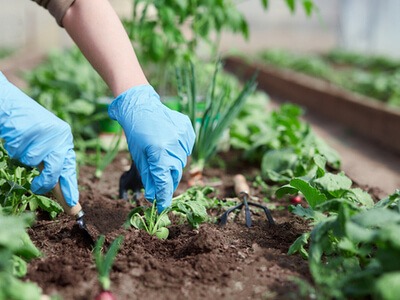Enjoying Gardening With Great Results
Gardening isn’t as exciting as playing slots but the Sloto Cash Casino suggests that you alternate a high-energy activity like slots gaming with low-key pastimes such as gardening. Everywhere in the world people love to garden. People garden to create beauty, to grow nutritious food, for exercise, as a hobby, to stimulate their mind and imagination and to produce something from nothing. Gardening is a suggested activity for people of all ages – seniors, children and everyone in-between. According to mental health researchers gardening improves one’s mood, reduces feelings of stress, gives one a sense of purpose and achievement and helps to stabilize feelings of depression and anxiety.
Best of all, gardening offers wonderful rewards. Regardless of whether you have a small window garden with flowers and herbs or a large yard with rows of edibles you can enjoy the sense of accomplishment that you’ll get out of a nicely tended garden.
The process of gardening is therapeutic but ultimately, gardeners want to see results. There are thousands of video tutorials and hundreds of books that give you instructions for getting started with a garden, maintain your garden and take your garden to the next level. Some procedures are best undertaken by professional or highly accomplished gardeners but there are plenty of ideas that will help amateurs and novices create the best possible crop of flowers, plants and vegetables.
Flowers
- Identify spaces in your garden area that are sunny and spaces that are shady. Then, plant the flowers accordingly. If you are planting from seeds, the seed packet will give you instructions as to whether that particular flower does well in a sunny or a shady area. If you’re planting a flower plant, ask the nursery salesperson to direct you to the type of flower plant that will do well in the space that you have available.
- Consider putting in a drip irrigation system. Drip irrigation delivers water directly to the plant’s roots so you don’t waste water. Via a computerized system, the irrigation is set to go on every day at a certain time for a specific amount of time so you don’t have to worry about forgetting to water your flowers or get nervous if you are away for a day or two.
- It’s important that you have the right type of soil for different types of flowers. Test your soil before you start planting to determine whether the soil is acidic or alkaline. Some plants do well in acidic soil and others thrive in alkaline soil. There are elements that you can add to your soil mixture so that it will match the type of flowers that you plant. You want soil that’s nutrient-rich and well-drained. You may want to bring in new soil before you start planting if the soil in your yard is sandy or otherwise unsuited to supporting new plants and flowers.
- Think ahead as to whether you want to plant annuals or perennials. Many of the most beautiful flowers are annuals which means that they bloom for one season and then seed out with new flowers appearing the following year. Marigolds, petunias, pansies, impatiens and others are those that give a garden its most brilliant colors but they bloom for only one year. Biennials such as black-eyed Susans and foxgloves produce leaves one year and flowers the second, after which they seed out and the process starts again.
- After a flower dries, pluck it off. A new one will bloom to take the place of the one that dried.
- Watch tutorials to learn how to cut back overgrowth to keep the flower plants healthy.
- After you plant, apply a 2-inch-deep layer of mulch around each plant. The mulch blocks out the sun which helps to reduce weeds. Mulch insulates the soil so it stays cooler in summer and warmer in winter. Mulch also reduces moisture loss that can occur through evaporation so that the soil won’t dry out as quickly. There are different types of mulch material -- straw, pine needles, shredded leaves, etc. Alternately, you can buy mulch at a plant nursery.
Vegetables
- All of the points regarding growing flowers are also applicable to vegetables including the importance of growing some vegetables in very sunny areas and making sure that others aren’t exposed to too much sun.
- Be careful with pesticides. Most vegetables, if watered, fertilized and cared for properly, can withstand pest invasions. Bringing pesticides can ultimately do much more harm than good. If you do use some kind of chemical repellant on your vegetables, apply them late in the day or in the evening – not in the morning when beneficial insects and pollinators are most active.
- Don’t over fertilize – too much nitrogen, the main ingredient in fertilizer, can be harmful to the soil and to your plants. Focus on organic compost and mix it in with the rest of the soil. That will supply the plants with nutrients that they need.
Window Garden
Don’t have a garden area? Consider gardening with window boxes. You can grow many flowers, herbs and other plants that don’t need deep soil in window boxes. You can use any type of container for a window garden including plastic, metal or wood…..as long as it has a drain hole. If you live in a cold climate it’s a good idea to avoid ceramic and terracotta containers because they can crack in the cold.
Many people use a window garden for herbs. If that’s your plan, you can combine different types of herbs together in one window box. Most herbs like to be kept moist so don’t forget to water!
Gardening is a great hobby and can produce good results. You don’t need to plant a huge garden from the get-go – start small and work your way up. The best gardeners learn by trial and error.
And....when the sun and sweat has you too pooped to continue, come on inside to the comfortably air conditioned house and settle down to some fun at SlotoCash Casino - no better way to relax than spinning some online casino slots!!!






